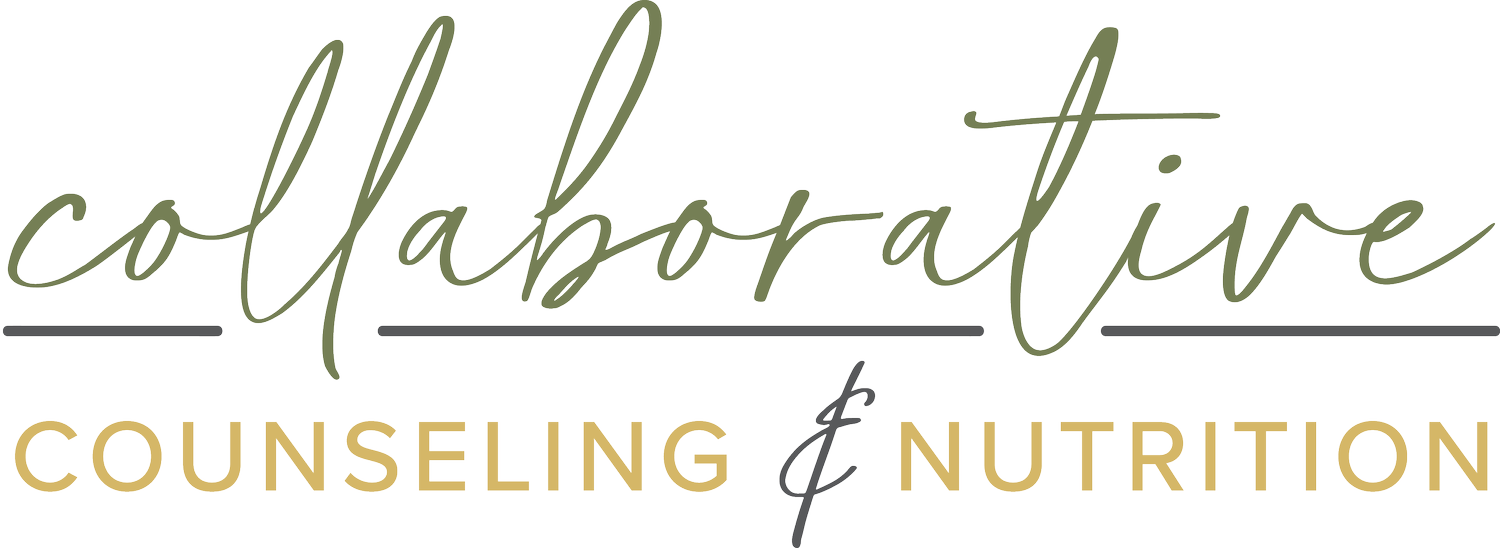Obsessive Compulsive Disorder and Eating Disorders
Obsessive Compulsive Disorder (OCD) is a mental health condition characterized by two types of symptoms: obsessions and compulsions. The obsessions and compulsions work in a cycle like this.
An obsession is an intrusive or repeated thought, image, urge, or feeling. The obsessions cause distress of some kind - anxiety or fear. An obsession is ego-dystonic, meaning that it goes against an individual's values or beliefs, leading to distress. Everyone experiences intrusive thoughts or images, but someone without OCD can move on more easily, while someone with OCD can get stuck in the cycle. So, to tend to the distress from the obsession, a compulsion is done. This is a behavior used to reduce distress, but it only offers temporary relief.
Eating Disorder Awareness Week Post Roundup
Happy Eating Disorder Awareness Week 2025! Today, we are sharing a round-up of all things eating disorder awareness! Want to learn more about eating disorders? Looking to better understand treatment options for yourself or a loved one? Click on the following links for in-depth resources on each topic
Ask the Team: What Should I Expect from a Parent/Caregiver Joint Session?
We are back today with another edition of, Ask the Team! Not only do our clinicians collaborate on client care and treatment with each of our clients, but we also collaborate with parents and caregivers! Today, we are covering what parents and caregivers can expect in a joint session with your adolescent or young adult treatment team.
Factors That Contribute to the Development of Eating Disorders
What contributes to the development of an eating disorder? As mental health awareness becomes more prominent and ED research is on the rise, we are finding that many factors are responsible for the development of eating disorders. Some may argue that eating disorders are a lifestyle choice. This is not true at all! Understanding how eating disorders develop is a crucial part to identifying the contributing cause, and is helpful for navigating individualized treatment and recovery.
Drunkorexia
It’s Friday night—maybe even Thursday—and you're getting ready to head out with friends. You haven’t eaten since lunch, maybe skipped dinner on purpose, and squeezed in a quick workout before hitting the bars. It’s just another night out, right?
It might feel like that, but this pattern of behavior is actually known as "drunkorexia," a term used to describe the practice of restricting food, over-exercising, or purging to compensate for the calories in alcohol. Although not an official diagnosis, it’s a form of disordered eating that essentially prioritizes alcohol over nutrition. It’s become so common, especially in college, that it can be easy to overlook how harmful it really is.
Diabulimia
What’s diabulimia? This is a term you may not be familiar with, but it’s a dangerous issue that affects individuals with diabetes. People with diabetes are already at higher risk for developing eating disorders (up to 20% of type 1 diabetics will develop an eating disorder in their lifetime). So, what is diabulimia and why is it a problem?
Eating Disorders in Minoritized Communities
Today, we are sharing an introduction post to eating disorders in marginalized, minoritized, and underrepresented communities. We will cover statistics, stereotypes, and barriers to diagnosis and treatment. Keep an eye out for upcoming posts covering eating disorders in these groups (ie. EDs in the Black Community; EDs in the LGBTQIA2+ Community, etc.).
All About BMI
The Body Mass Index (BMI) is a number that must tell us a great deal about our health, right? After all, it’s printed at the top of the page, right next to your name and DOB on most medical records, so it must be important!
But what does it really tell us? At its core, BMI only reflects two things: a person’s weight relative to their height. Yet, for reasons that are more historical than scientific, this simplistic metric is widely used by healthcare systems to define health.
Eating Disorders and Athletes
Athletes are not immune from the impact of diet culture. In fact, athletes are 2-3 times more likely to develop an eating disorder compared to non-athletes. Up to 45% of female athletes and 19% of male athletes struggle with disordered eating. Additionally, 84% of female college athletes report having disordered patterns of eating or have engaged in unhealthy weight control practices at one time.
Ozempic and Eating Disorders
Research shows both losing weight and restrictive dieting increase the risk for eating disorders. Many assume a restrictive diet has a name, rules, and a specific duration, but the term “restrictive diet” simply refers to eating less than your body needs. Not only are GLP-1’s prescribed in addition to restrictive diets, but they also make following a restrictive diet much easier due to their mechanism of action: extreme appetite suppression and delayed gastric emptying.
Bulimia Nervosa
Today, we are revisiting and updating our post on Bulimia Nervosa. Bulimia is one of the more well-known eating disorders, impacting 1.5% of women in their lifetime and 0.5% of men [6]. Like other eating disorders, bulimia nervosa impacts individuals across the race, gender, sexuality, and ability spectrum. The lifetime prevalence of bulimia in trans men is 3.2% and trans women 2.9%, with Black teens being 50% more likely to develop bulimia than their white counterparts [7]. In this post, we are reviewing the diagnostic criteria, symptoms, medical complications, and treatment.
Barriers to Eating Disorder Treatment and Care
Happy Eating Disorder Awareness Week 2024! In our last blog post, Brenna shared the different levels of care available for eating disorder treatment. While having different levels of care is helpful, there are quite a few barriers that keep those with eating disorders from seeking treatment on their recovery journey. This is not an exhaustive list, but we hope it can increase your awareness and propel you to learn more.
Eating Disorder Levels of Care
You are thinking about getting help for your relationship with food and/or your body. This is no small feat! There is much to be proud of here, especially in a diet-culture-saturated society. Thankfully, there are plenty of options or ways to get help for your specific experience. A range of care exists to meet your needs, so to decide what might be the best for you, it can be helpful to learn more about what options do exist!
Understand the Restrict/Binge Cycle
To struggle with your eating behavior can be so difficult, isolating, scary, and confusing! Not to mention all of the messages that exist within our society that tell us how we “should” be eating, what we should avoid, how often we should be eating, etc. It is absolutely exhausting. The more you learn about yourself, your body, and your own eating patterns, you will find emotions play a role.
What is Diet Culture?
Diet culture is a well-used term in the eating disorder/anti-diet space. Today we are revisiting an old post on diet culture, sharing updated information, and new insights so you can better understand and identify how diet culture shows up in your life.
Anorexia Nervosa & Atypical Anorexia Nervosa
Today we want to share information about another eating disorder diagnosis our team sees on a regular basis Anorexia Nervosa. Anorexia Nervosa (AN) has one of the highest mortality rates among mental health diagnoses [2] due to malnutrition, complications, and/or suicide [3]. While AN is a commonly known eating disorder often characterized by an individual having a very low body weight, it is critical to understand that it can affect people in a variety of body sizes and shapes. Below, we break down the differences and similarities between AN and atypical anorexia (AAN) (hint: there is only 1 major difference), causes, symptoms, and treatment.
The Difference Between Disordered Eating and Eating Disorders
Today on the blog we are diving into the difference between disordered eating and eating disorders. Learn the differences and what to look for.
What is Orthorexia?
Today we want to share information about another eating disorder diagnosis our team sees on a regular basis, Orthorexia. In the New Year, the focus in January is often on starting a new diet, losing weight, taking control of your health, incorporating new health behaviors, cutting out certain food groups, and more. While there is no singular cause of an eating disorder, diet culture behaviors, and mindset can contribute to the development of eating disorders, including orthorexia.
Binge Eating Disorder (BED)
Binge Eating Disorder (BED) is the most common eating disorder in the United States. Learn more about BED and ways to find help.




















